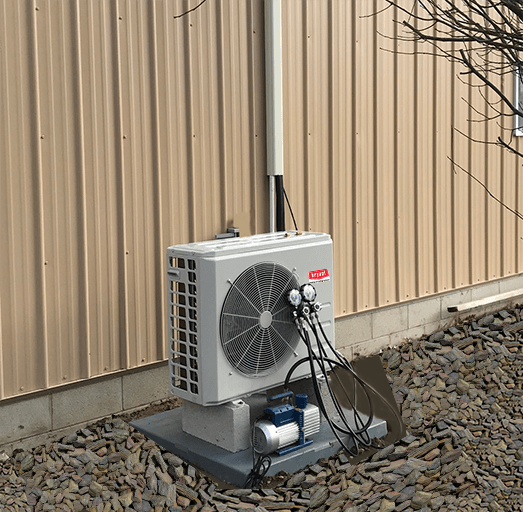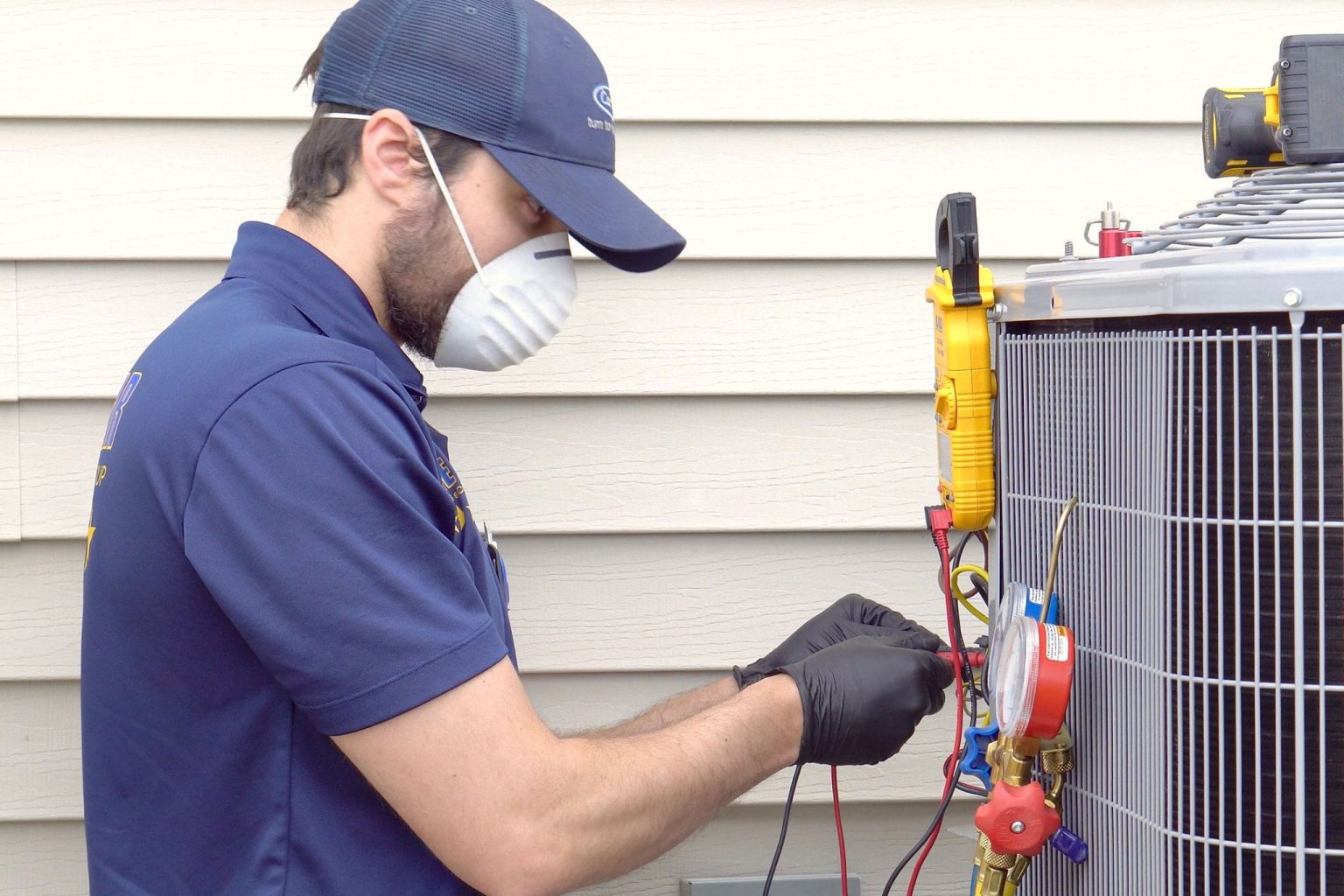Considering the complexities of cooling down old residences, cooling installation for historic homes positions peculiar predicaments.
How can you protect the honesty of period residential properties while ensuring first-class interior convenience?
Untangle the enigmatic interplay in between contemporary cooling benefits and ageless building treasures in the adhering to discussion.
Trick Takeaways

- Protect historic charm with ideal products and experienced support.
- Update electrical systems for contemporary heating and cooling compatibility and safety.
- Check out small air conditioning choices like mini-split or high-velocity systems.
- Boost power effectiveness via insulation, clever thermostats, and upkeep.
Historic Considerations
When thinking about the installment of air conditioning in a historic home, it is essential to recognize the one-of-a-kind historical facets of the residential property. Remediation obstacles commonly emerge when attempting to blend contemporary comfort with preserving the historical honesty of the home. The architectural effect of setting up a/c need to be very carefully examined to see to it that the system doesn't diminish the home's original layout.
Protecting the historic appeal of a home while upgrading its services can be a fragile equilibrium. Reconstruction difficulties may include finding methods to conceal ductwork, locating very discreet locations for the outside system, or adjusting the system to fit within the existing building restrictions. It's essential to work with specialists experienced in historical home renovations to browse these difficulties successfully.
The architectural effect of including a/c can be considerable. Cautious factor to consider has to be offered to just how vents, thermostats, and other aspects will certainly blend with the home's visual. Making sure that the setup doesn't jeopardize the historic stability of the residential or commercial property is critical when undertaking such a task in a historic home.
Evaluating Electric Solutions
To assure a successful installation of a/c in a historical home, assessing the compatibility and capacity of the existing electrical systems is important. Before proceeding with the installation, it's important to assess whether the electric system can deal with the extra lots that the air conditioning device will certainly present. In many cases, upgrading the voltage of the electrical system might be required to see to it it can power the brand-new cooling system efficiently.
System compatibility is one more crucial element to assess when analyzing the electrical configuration of a historic home. Older electric systems might not work with modern air conditioning units, which can lead to malfunctions and even posture safety hazards. Making certain that the electrical system works with the brand-new a/c devices will certainly assist avoid any type of prospective issues down the line.
Space Restrictions and Ductwork Options
When dealing with minimal space in your historical home, you could wish to check out ductless mini-split systems or high-velocity cooling and heating systems as feasible alternatives. These systems can supply efficient cooling without the requirement for comprehensive ductwork, making them appropriate for older buildings with area constraints.
Ductless Mini-Split Equipments
Considering area constraints and various ductwork options, ductless mini-split systems use a versatile option for air conditioning setup in historic homes. These systems offer substantial energy cost savings contrasted to standard a/c arrangements, as they allow for zoning, indicating you can cool down particular areas only when required.
The design versatility of ductless mini-split systems is additionally advantageous for historic homes, where preserving the original looks is vital. With no ductwork called for, installment is much less invasive, making it a preferred choice for older homes with restricted room or where protecting building honesty is a priority.
Ductless mini-split systems are efficient, personalized, and mix effortlessly right into historic interiors, offering a sensible and energy-efficient cooling solution.
High-Velocity HVAC Solutions
High-Velocity cooling and heating systems supply a compact and reliable air conditioning remedy for historical homes with restricted space and certain ductwork requirements. When thinking about these systems for your historic home, right here are four bottom lines to keep in mind:
- Mini duct systems: High-Velocity a/c systems utilize tiny ducts that are a lot smaller sized in diameter contrasted to traditional ductwork, making them suitable for homes with space constraints.
- Small layout: The portable style of these systems permits less complicated setup in older homes where area is limited.
- Reliable cooling: Despite their small dimension, high-velocity systems are capable of offering effective air conditioning throughout your historical home.
- Versatile setup: These systems provide various ductwork options, such as versatile tubing, which can be directed through existing wall surfaces without major renovations.
Energy Performance Solutions
To improve the power performance of your historical home, take into consideration updating the insulation and incorporating a wise thermostat. These options can help manage indoor temperature levels effectively and decrease energy usage, making sure an extra sustainable and affordable air conditioning system for your distinct residential property.
Make these upgrades part of your a/c setup plan to optimize comfort while decreasing ecological influence.
Insulation Upgrades
Upgrading the insulation in your historic home can considerably improve its power effectiveness and total comfort while protecting its one-of-a-kind character and charm. Think about these vital methods for insulation upgrades:
- Examine Home Window Treatments: Mounting energy-efficient home window therapies like insulated drapes or blinds can aid minimize warmth transfer and enhance the overall performance of your home.
- Enhance Roofing Insulation: Upgrading roofing insulation is necessary for far better temperature policy within your historic home, aiding to maintain it cool in the summer and warm in the wintertime.
- Seal Gaps and Cracks: Recognizing and sealing gaps and cracks in your house's walls, floors, and ceilings can protect against air leak and enhance insulation efficiency.
- Take Into Consideration Attic Insulation: Effectively shielding your attic can significantly minimize warm loss and improve the overall energy efficiency of your home.
Smart Thermostat Integration
Taking into consideration the energy-saving benefits of insulation upgrades in your historical home, integrating a wise thermostat can better improve your power performance options.
Smart thermostats supply specific control over your home's temperature level setups, leading to substantial energy savings. By enhancing heating and cooling schedules based on your preferences and daily routines, you can lower energy waste and reduced utility costs.

Additionally, clever thermostats offer remote access, enabling you to adjust the temperature settings from anywhere using your smartphone or computer system. This attribute allows you to ensure your home is successfully warmed or cooled even when you're away, taking full advantage of convenience while minimizing power usage.
Embracing clever thermostat innovation is a functional step towards boosting the power performance of your historical home.
Preservation Techniques for Air Vents
Protecting the honesty of historical air vents is vital throughout the installation of a/c systems in older homes. When it concerns preserving the building credibility of your historic building while updating its comfort, take into consideration the following preservation methods for air vents:

- Reconstruction Techniques: Execute mindful reconstruction methods to preserve the initial layout and material of the air vents, guaranteeing they mix seamlessly with the historical appearances of your home.
- Speak with Experts: Seek advice from specialists experienced in historical conservation to lead you on the very best practices for keeping the air vents' building honesty.
- Custom Solutions: Check out personalized solutions that cater to the special characteristics of your historic air vents, enabling contemporary upgrades without endangering their original beauty.
- Period-Appropriate Materials: Choose period-appropriate products when repairing or changing air vents, guaranteeing they straighten with the historical period of your home's style.
Specialist Tips for Successful Installment
When mounting air conditioning in historic homes, ensuring effective installation requires following specialist suggestions for a smooth combination with your building's special functions.
Begin by carefully reviewing service warranty protection supplied by different heating and cooling business to protect your investment in case of malfunctions. Get all required license demands from local authorities prior to beginning any setup work to stay clear of lawful issues down the line.
Spending plan preparation is vital; ensure to account for any kind of unexpected expenditures that may emerge during the setup procedure. Furthermore, establish upkeep schedules from the start to keep your brand-new system running effectively for several years ahead.
Frequently Asked Questions
Can A/c Be Installed in a Historic Home Without Compromising Its Historic Integrity?
Yes, you can mount a/c in a historic home without jeopardizing its historic integrity. Preservation techniques can be made use of to flawlessly incorporate contemporary air conditioning systems while keeping the home's original appeal.
By purposefully placing ductwork and devices unseen, you can guarantee that the historical attributes continue to be famous.
It's possible to enjoy the conveniences of cooling in a historic home without compromising its one-of-a-kind character.
Exist Unique Factors To Consider to Bear In Mind When Putting Up A/c in a Historic Home With Outdated Electrical Equipments?

When upgrading wiring in a historical home with obsolete electrical systems, unique considerations are crucial. Conservation techniques have to be used to preserve the historic stability of the home.
It is essential to deal with professionals who comprehend the delicate equilibrium in between modern-day comforts and protecting the home's one-of-a-kind character.
Exactly How Can Ductwork Be Discreetly Mounted in a Historic Home With Limited Room?
When handling restricted room in a historic home, you'll need to contemplate very discreet design and space-saving solutions for mounting ductwork. To preserve historical preservation while appreciating contemporary benefit, discover innovative means to tuck air ducts away without compromising the home's appearances. ac not cooling
Look into slim air duct alternatives or consider using existing cavities for duct positioning. By blending functionality with subtlety, you can guarantee a seamless assimilation of air conditioning in your historic home.
What Are Some Energy-Efficient Alternatives for Air Conditioning in Historic Houses?
When searching for energy-efficient choices for a/c in historic homes, consider using energy-efficient zoning and small split systems. Energy-efficient zoning assists manage temperature levels in different areas of your home, preserving energy.
Mini divided systems are an excellent selection for older homes with restricted area, offering both cooling and heating features. By going with these services, you can keep your historical home comfortable without compromising on power effectiveness.
Exist Details Conservation Techniques That Should Be Utilized for Historic Air Vents During Setup?
When setting up a/c in historical homes, conservation strategies play a crucial role. It's important to make sure that the existing air vents are very carefully integrated into the new system to preserve the historical visual of the home.
Conclusion
When installing a/c in historical homes, it's important to consider the unique obstacles such as preserving the home's historic honesty, reviewing electrical systems, and working within space restraints.
By carefully intending and making use of energy-efficient remedies, you can efficiently mount a/c without endangering the character of your historical home.
Bear in mind to seek advice from specialists for support and assurance appropriate conservation techniques for air vents to preserve the appeal and capability of your home.
